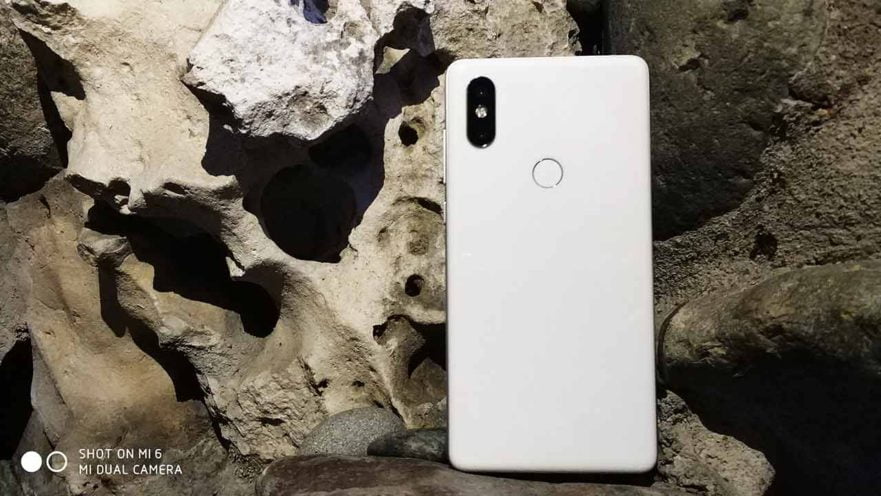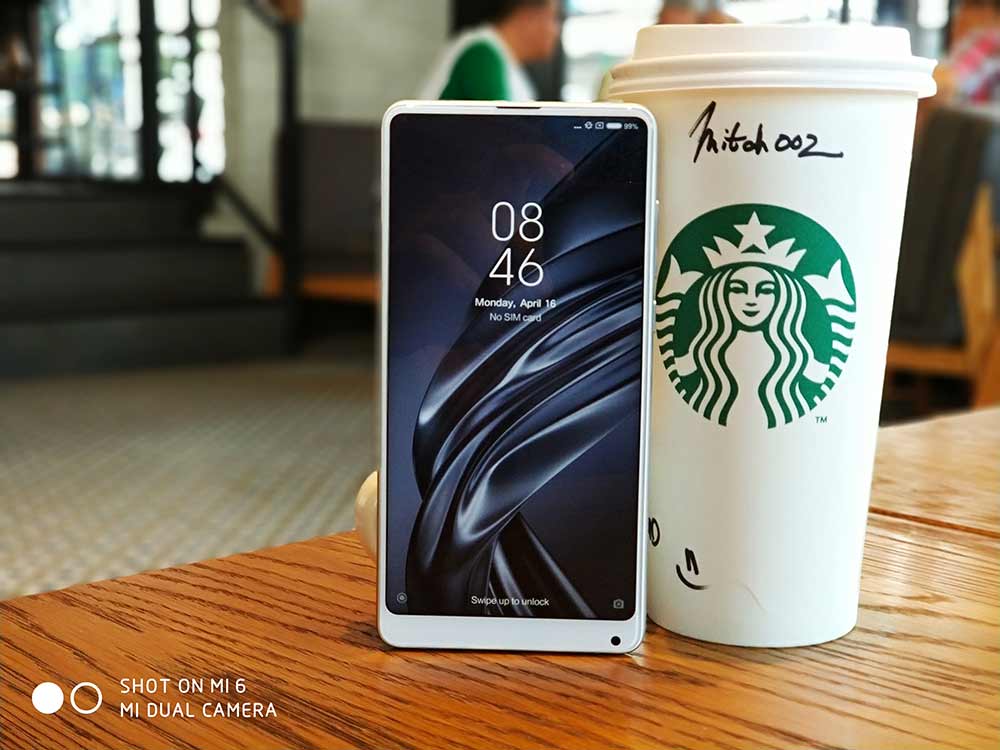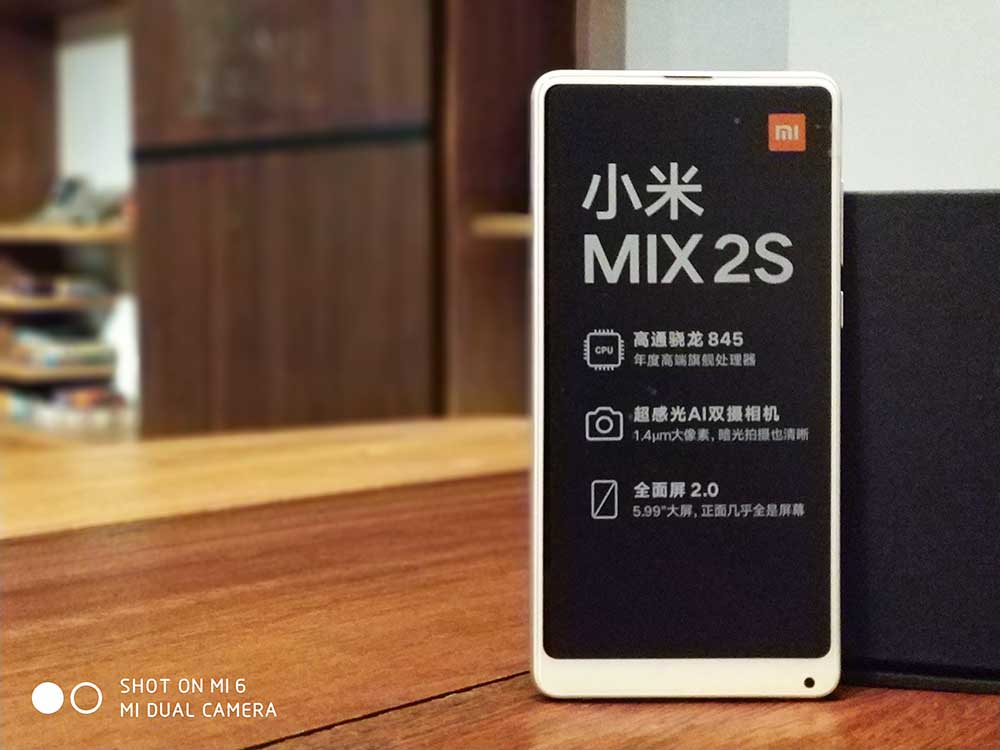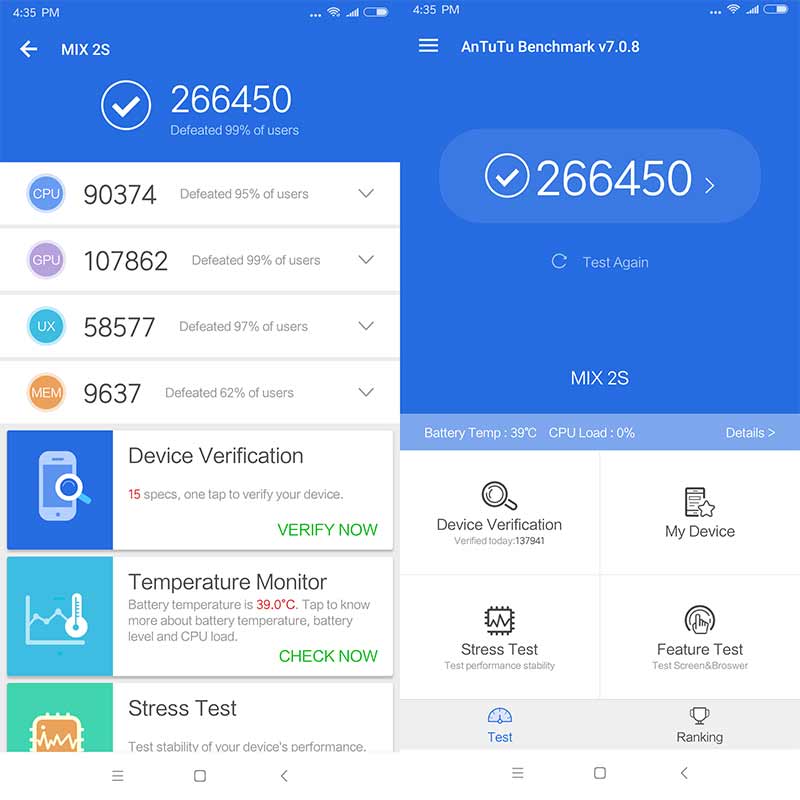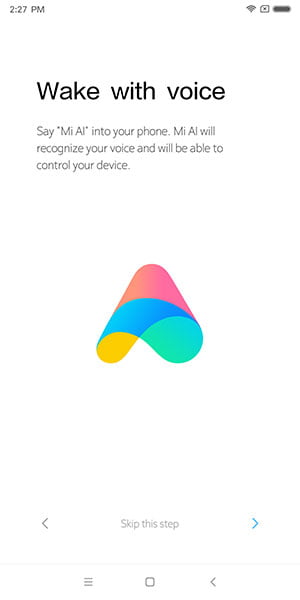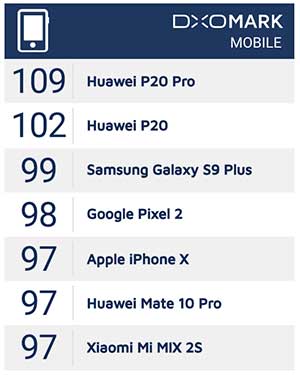Today, we’re taking a look at the latest release from Xiaomi, the Mi MIX 2S. The phone was released toward the end of March 2018.
(The author, whose passion is to review whatever Xiaomi releases, is a contributor at Revü Philippines.)
The Xiaomi Mi MIX 2S is basically a reincarnation of the Mi MIX 2. You get pretty much the same shell but with different specs, with the MIX 2S tasking the latest and fastest Qualcomm Snapdragon 845 system-on-a-chip to run the hardware.
Design
The Xiaomi Mi MIX 2S has a design that’s different compared to non-Xiaomi phones on the market today. It shares a lot of similarities with the MIX 2, and has inherited the bezel-less design of the original MIX.
It has curvier corners, and Xiaomi also trimmed down the size of the screen compared to the first MIX. The size of the screen drops to 6 inches from 6.4 inches on the MIX, which is a good move from Xiaomi to make the phone more manageable.
SEE ALSO: Next Xiaomi smartphone launching in the Philippines teased
The company also downsized the battery capacity from 4,400mAh to 3,400mAh, and that’s not encouraging to hear because bigger screens tend to drain the battery faster than smaller ones.
The protruding dual-camera module at the back is lifted directly from the Apple iPhone X, and is similar to that on the Xiaomi Redmi Note 5 (or Redmi Note 5 Pro in India). We’re not fans of this design, as it can quickly lead to scratches on the lenses at the back.
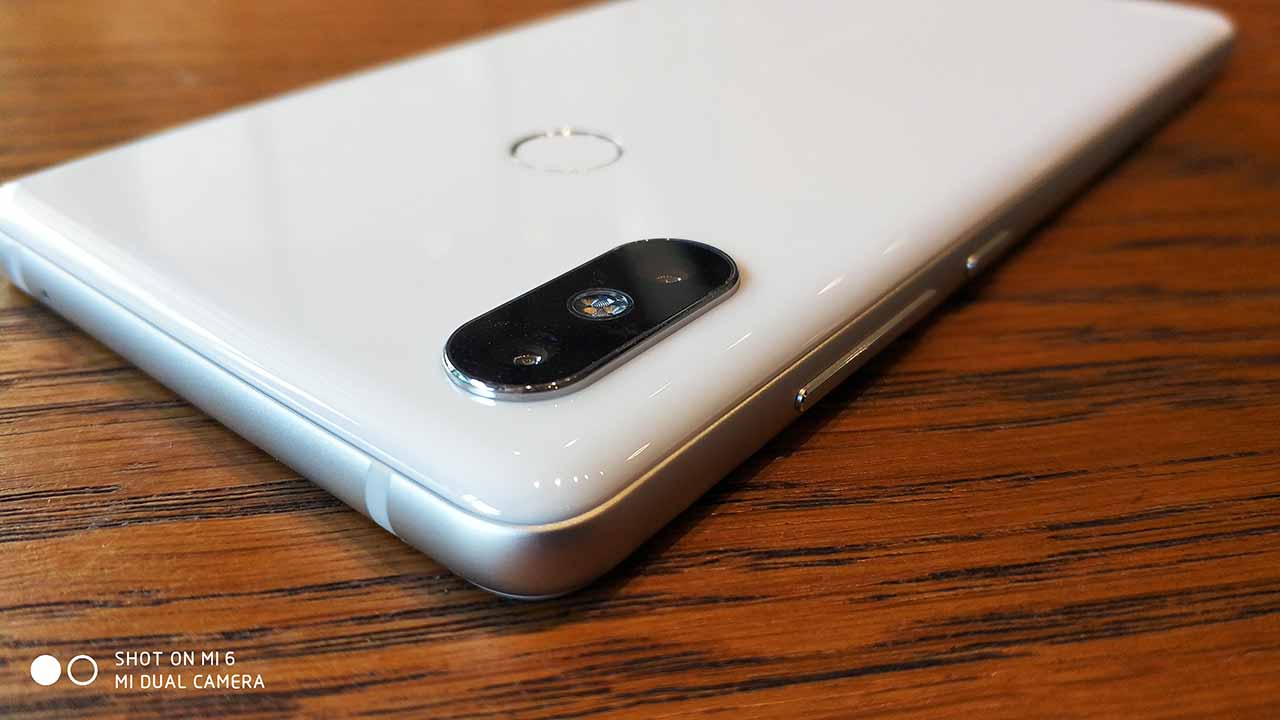
The protruding dual-camera module at the Xiaomi Mi MIX 2S’ back is lifted directly from the Apple iPhone X, and is similar to that on the Xiaomi Redmi Note 5 (or Xiaomi Redmi Note 5 Pro in India).
One not-so-clear difference is that the screen-to-phone ratio is higher on the MIX 2S at 81.9 percent, as opposed to 80.8 percent on its predecessor. It went up a bit but not so much, and this is probably one of the concerns holding back people from buying the MIX 2S, or the MIX 2.
Display and audio
We were expecting a lot from the display side, as we were impressed with the screen on the original MIX. The Xiaomi MIX 2S seems to have outdone its older sibling. The full-HD LCD display of the MIX 2S is good for showing photos and videos.
We watched Captain America: Civil War on our unit, and the experience was superb. The big and clear display stands out. We compared the picture quality to that of the Xiaomi Mi Max 2, and the MIX 2S simply looks better.
READ ALSO: Xiaomi-Black Shark gaming phone up for sale in the Philippines
Sound quality is great. We didn’t run into any problems turning up the volume to the max. Inside a room of roughly 8 square meters, sound from the MIX 2S can be heard, wall to wall. We also paired the phone to our Xiaomi Mi Sports Bluetooth Headphones, and came away satisfied with the audio playback while running on a treadmill.
SEE ALSO: 1st major PUBG Mobile update out now. Here’s what’s new and PUBG Mobile now available. The Android and iOS requirements
We also played PUBG Mobile on our unit and liked what we saw. The graphics looked excellent on the MIX 2S, thanks in part to the powerful Snapdragon 845 processor under the hood. And the size of the screen makes playing the game easier for people with big fingers.
Qualcomm Snapdragon 845
One of the few devices that sports the newest high-end chipset from Qualcomm is the Xiaomi MIX 2S. The Snapdragon 845 has eight cores that can run up to 2.8GHz and relies on the powerful Adreno 630 for graphics processing. Our unit also has a generous serving of 8GB RAM.
The combination will give you best gaming experience you can get on an Android smartphone. Naturally, it can run graphics-intensive games like PUBG Mobile and NBA 2K18 without breaking a sweat.
READ ALSO: New NBA 2K Mobile game is a lot like NBA 2K18, but free and NBA 2K18 for Android and iOS: Can your phone run it?
We ran several stress tests on our phone and did not notice any lag or slowdowns whatsoever. Multitasking was a breeze, too. Exceptional day-to-day and graphics performance and multitasking make the Snapdragon 845 one of the best, if not the best, platforms for Android flagships.
The MIX 2S with 6GB RAM and 64GB storage yielded 252,274 points on Antutu Benchmark, while the 6GB RAM and 128GB variant posted 266,450 points. It’s a huge jump from the MIX 2’s 158,296 points. However, do note that these scores were taken using different versions of the benchmarking app.
Connectivity
Xiaomi has deployed its own voice assistant on the Mi MIX 2S. You can talk to Xiao AI on the phone to get directions or the latest weather update. If you’re in the mood for it, you can ask it to sing you a song. The downside is that Xiao AI only supports Chinese right now.
For wireless connectivity, the 2S supports 24 different LTE bands on the premium edition, while the regular version gets 15 bands. The number of supported LTE frequencies is fewer than the 37 bands on the much older Xiaomi Mi Note 2. Granted, our MIX 2S is actually meant for the Chinese market, hence the decision to have fewer bands available on the device.
There are two SIM card slots on the inside. Both are compatible with LTE networks. The phone supports faster LTE-Advanced technology with carrier aggregation where available. Wi-Fi Direct is there, and so is wireless screen mirroring via the Miracast protocol. There’s Bluetooth 5.0 and NFC on the unit as well, which means transferring data from older phones using Xiaomi’s Mi Mover app won’t be a problem.
Camera
Technically speaking, the MIX 2S provides the best camera you can get on a Xiaomi phone. The system on the MIX 2S even got a nod from DxOMark, which is a trusted source for camera reviews.
Currently, the phone is tied with the Apple iPhone X and Huawei Mate 10 Pro for fifth place in DxOMark’s ranking for mobile. This speaks highly of the phone’s imaging performance. Below it are the Apple iPhone 8 models and Samsung Galaxy Note 8.
The primary system on the Xiaomi MIX 2S features two 12-megapixel cameras with Samsung and Sony sensors. Four-axis image stabilization is included in the unit for brighter and clearer shots, especially in low light. Testing the back cameras, we found that they perform well in general.
Sample photos taken with the Xiaomi Mi MIX 2S: 5 inside shots and 5 outside shots
The front snapper has a 5-megapixel Omnivision sensor. It’s nothing special, but it has a portrait mode for selfies with some background blur. Face unlock is present as well, and provides a good alternative to unlocking the phone using the fingerprint reader at the back.
[sciba leftsrc=”https://www.revu.com.ph/wp-content/uploads/2018/04/Xiaomi-Mi-MIX-2S-sample-selfie-photo-no-bokeh-review-price-specs-Revu-Philippines-ll.jpg” leftlabel=”Normal mode” rightsrc=”https://www.revu.com.ph/wp-content/uploads/2018/04/Xiaomi-Mi-MIX-2S-sample-selfie-photo-bokeh-effect-review-price-specs-Revu-Philippines-mm.jpg” rightlabel=”With bokeh effect” mode=”horizontal” width=””]Sample selfies shot inside an establishment: Normal mode vs with bokeh effect
Battery life
Putting a 3,400mAh battery inside a slim unibody design isn’t easy to pull off, but it’s still a disappointment coming from the MIX’s impressive 4,400mAh battery. That said, the Xiaomi MIX 2S still delivers decent battery life for a big-screen phone. We recorded 10 hours and 28 minutes of runtime on the unit with 64GB storage using the PCMark battery stress test. For comparison, the MIX averages 12 hours on the same battery test.
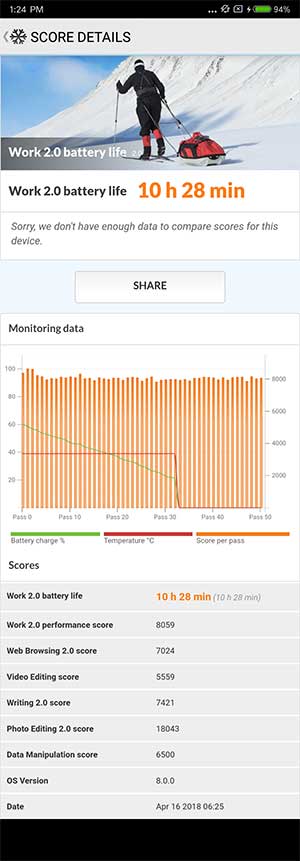
We recorded 10 hours and 28 minutes of runtime on our Xiaomi Mi MIX 2S the PCMark battery stress test.
Qualcomm’s Quick Charge 3.0 standard is supported, and it takes in 5 volts and 3.2 amps based on our testing using the supplied wall charger and cable. We were able to juice up our unit from 19 percent to full after 1 hour and 25 minutes plugged in.
Final thoughts
Overall, the Xiaomi Mi MIX 2S is a joy to use. The company has listened to fans and improved an already fantastic concept phone with a slightly higher screen-to-phone ratio and top-notch processing power. Its main camera module is a marked improvement over older generations, and is highly regarded by a well-renowned independent camera authority. Starting at ¥3,299 (around P27,358 or $523) in China, it’s plenty affordable, too.
Many will see this as an iterative update, but it’s nonetheless a welcome one.
Xiaomi Mi MIX 2S specs
- Qualcomm SDM845 Snapdragon 845 octa-core processor (4×2.8GHz Kryo 385 Gold and 4×1.8GHz Kryo 385 Silver)
- Adreno 630 GPU
- 6GB/8GB of RAM LPDDR4
- 5.99-inch IPS LCD display ultra-bright, energy-saving display, ~81.9% screen-to-body ratio
- 1080 x 2160 pixels FHD+, ~403 ppi pixel density , 1500:1 contrast ratio, 18:9 aspect ratio
- DCI-P3 color gamut, high color saturation
- Black ceramic finish, white, and black
- 64GB/128GB/256GB of memory
- 12MP, wide-angle lens, 4-axis OIS, f/1.8, 1.4µm dark-light enhancement, phase-detection auto-focus, dual LED (dual tone)
- 12MP, telephoto lens, portrait lens, f/2.4, 1.0µm, AI
- 5MP front camera, f/2.0, 1.4µm, auto-focus, mirror function, portrait mode
- Fingerprint scanner
- Dual SIM (Nano-SIM)
- 3G, LTE, 4G+ carrier aggregation, VoLTE calls
- Wi-Fi, Bluetooth 5.0, GPS, A-GPS, NFC
- 3,400mAh battery, Quick Charge 3.0-supported, 9V/3A
- Supports wireless charging 7.5W
- 4 x 4 MIMO technology to support MU-MIMO
- Sensors: ultrasonic distance sensor, ambient light sensor, gyro, vibration motor, accelerometer, barometer, electronic compass, hall sensor
- Android Oreo 8.0, MIUI 9
- USB-C port, UFS 2.1
- 150.86 x 74.9 x 8.1mm
- 189g
Share this Post


